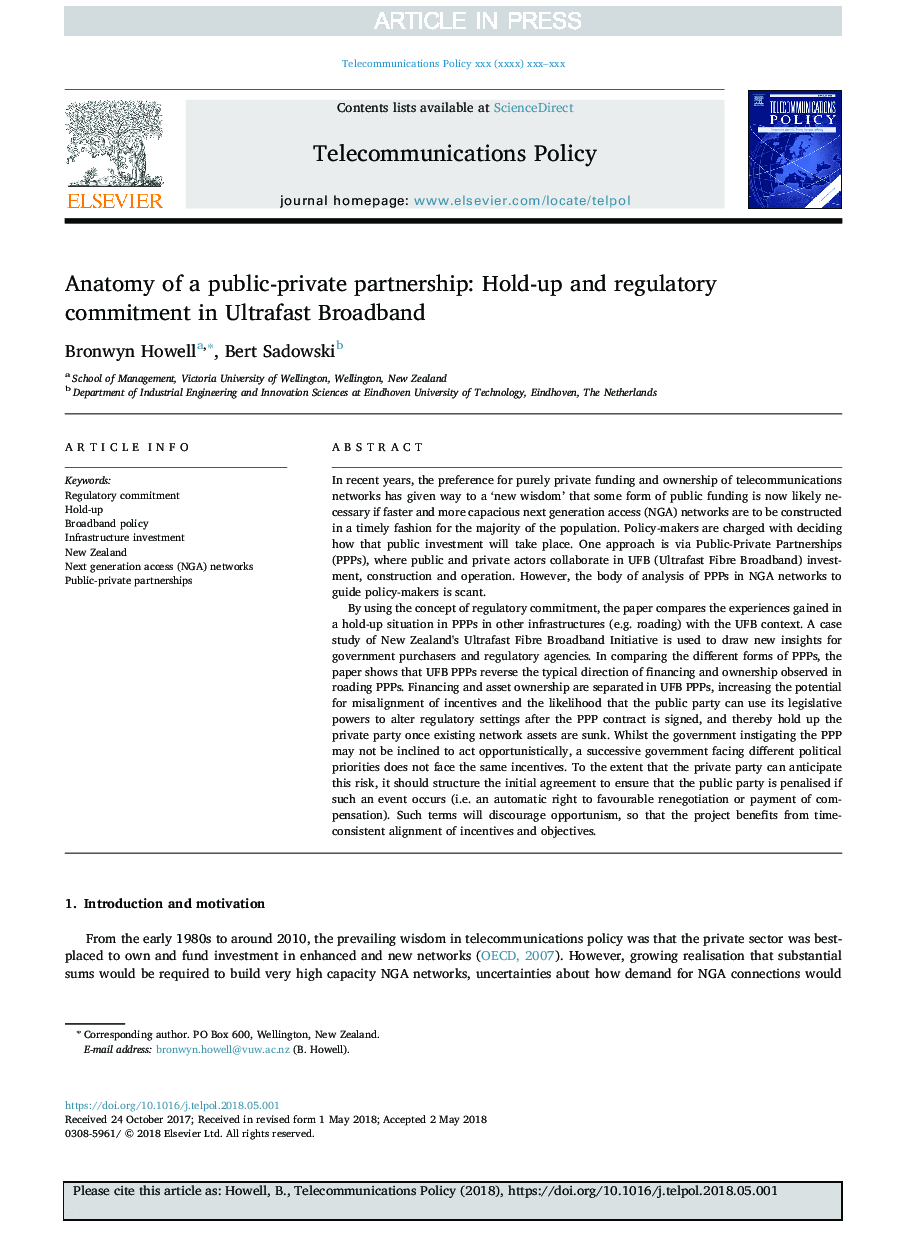| Article ID | Journal | Published Year | Pages | File Type |
|---|---|---|---|---|
| 6950212 | Telecommunications Policy | 2018 | 14 Pages |
Abstract
By using the concept of regulatory commitment, the paper compares the experiences gained in a hold-up situation in PPPs in other infrastructures (e.g. roading) with the UFB context. A case study of New Zealand's Ultrafast Fibre Broadband Initiative is used to draw new insights for government purchasers and regulatory agencies. In comparing the different forms of PPPs, the paper shows that UFB PPPs reverse the typical direction of financing and ownership observed in roading PPPs. Financing and asset ownership are separated in UFB PPPs, increasing the potential for misalignment of incentives and the likelihood that the public party can use its legislative powers to alter regulatory settings after the PPP contract is signed, and thereby hold up the private party once existing network assets are sunk. Whilst the government instigating the PPP may not be inclined to act opportunistically, a successive government facing different political priorities does not face the same incentives. To the extent that the private party can anticipate this risk, it should structure the initial agreement to ensure that the public party is penalised if such an event occurs (i.e. an automatic right to favourable renegotiation or payment of compensation). Such terms will discourage opportunism, so that the project benefits from time-consistent alignment of incentives and objectives.
Related Topics
Physical Sciences and Engineering
Computer Science
Information Systems
Authors
Bronwyn Howell, Bert Sadowski,
